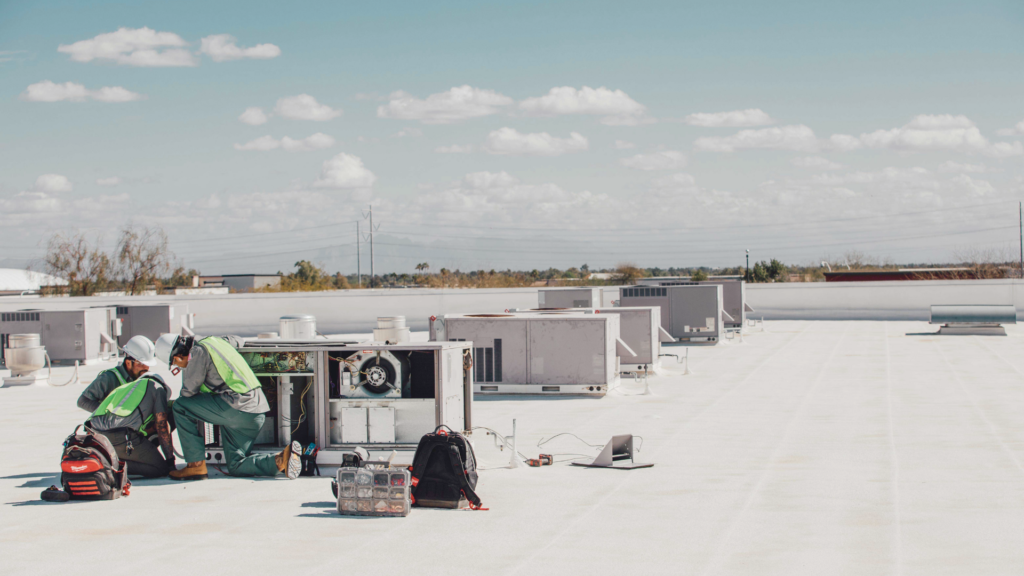HVAC distributor sales grow in Q1, summer forecast nuanced
HARDI distributors' sales grew five percent a month, on average, during the first quarter, with several factors at play looking ahead

Image: Fast Company
HVAC distributors’ sales were positive over the first quarter, compared to 2024, according to HARDI data released on Thursday.
Why it matters: The figure marks twelve consecutive months of positive annual sales growth for distributors — a proxy for contractor sales — following a sharp decline from March 2023 to 2024.
What’s happening: When adjusted for the same number of billing days compared to 2024, HARDI distributors’ revenue grew five percent a month, on average, during the first quarter.
- Annually, for the 12 months ending in March, sales increased by 3.3 percent, according to the data.
- Meanwhile, the ‘Days Sales Outstanding’ — a measure of how quickly contractors pay their bills — hovered around 38 days each month during the quarter, down from 41-42 days during the same period in recent years.
Of note: The average wholesale price of HVAC equipment rose 1.5 percent year-over-year as of March, according to the Federal Reserve. This means the 3.3 percent annual growth translates to ‘real’ growth of just under two percent, as HARDI analyst Brian Loftus explains to Homepros in an email.
Zoom out: Several factors — interest rates, housing, and weather — influenced the quarter’s performance and will likely impact the remainder of this year.
- “The Fed was trying to slow the economy for 30 months until the rate cut in September,” Loftus wrote in January. “We are very pleased to see the 10-year bond yield following the fed funds rate lower.”
- “The mortgage rate typically follows the 10-year yield, so this could have a positive impact on existing home sales, and replacement demand,” he added.
- Spot check: Since January, the 10-year treasury yield had fallen seven percent as of May 1.
On housing: Available home listings in the Southeast and Southwest are nearly back to pre-Covid levels, so it’s “safe to expect demand to be flat/up from here in those regions,” Loftus states in the email.
- However, listings are “way off” in the Central, Great Lakes, Northeast, and Mid-Atlantic regions, he notes. “Not much improvement [is] expected in those regions.”
On weather: The U.S. experienced above-normal cooling demand during May and June 2024. Cooling Degree Days, the primary measure of cooling demand, were up 46 and 44 percent, respectively, compared to May and June 2023.
- “If temps are normal [this year], sales could be off during May in the Northeast, Mid-Atlantic, Southeast, Great Lakes, and Southwest regions just because of the challenging weather comp,” Loftus cautions.
- “It’s possible to make progress, but [it] may not look like it at first when the first part of summer 2024 was warmer than normal across most of the country,” he adds.
But, but, but: In July and August, “Cooling Degree Days were at or below normal in most of our seven regions,” he highlights, “so it’s easier to attain unit growth during those months this year against that easy weather comp.”
What we’re watching: The average wholesale price of HVAC equipment, as tariff and A2L-driven price increases ripple through the supply chain over the next six months.
- So far, the price is “under control,” Loftus concludes, referring to the 1.5 percent bump as of March. “My only prediction is that will be higher in six months.”
- April sales figures will be published during the first week of June.
📬 Get our stories in your inbox
Keep reading
Congress kicks off budget talks with HVAC incentives on the table
As the House and Senate begin negotiating a unified federal budget plan, several developments impacting contractors are up for discussion
U.S. HVAC revenues eclipse $150 billion, report shows
The first in a two-part series of takeaways from HARDI's 'State of the Channel' report, including industry trends, data, and contractor input


